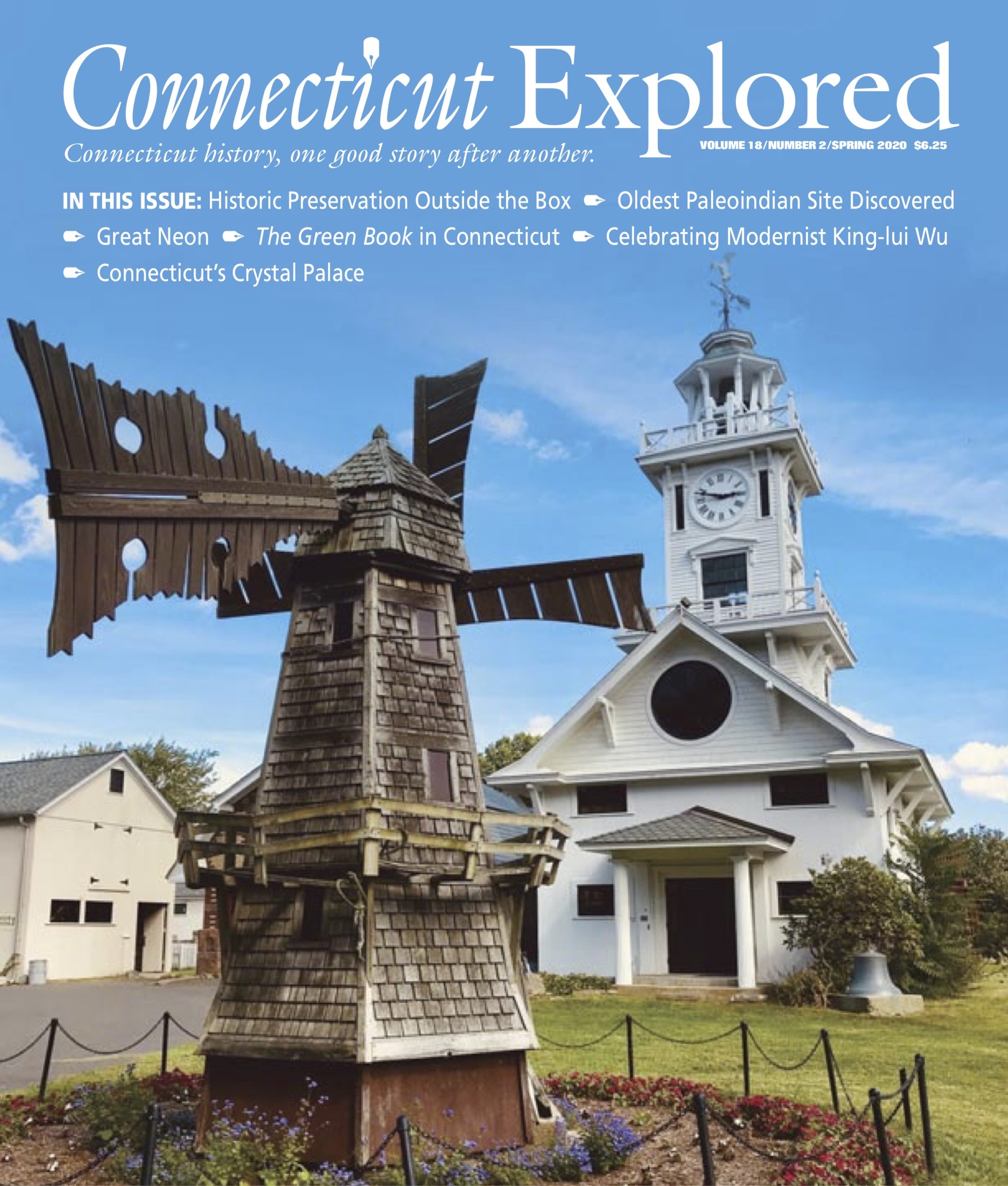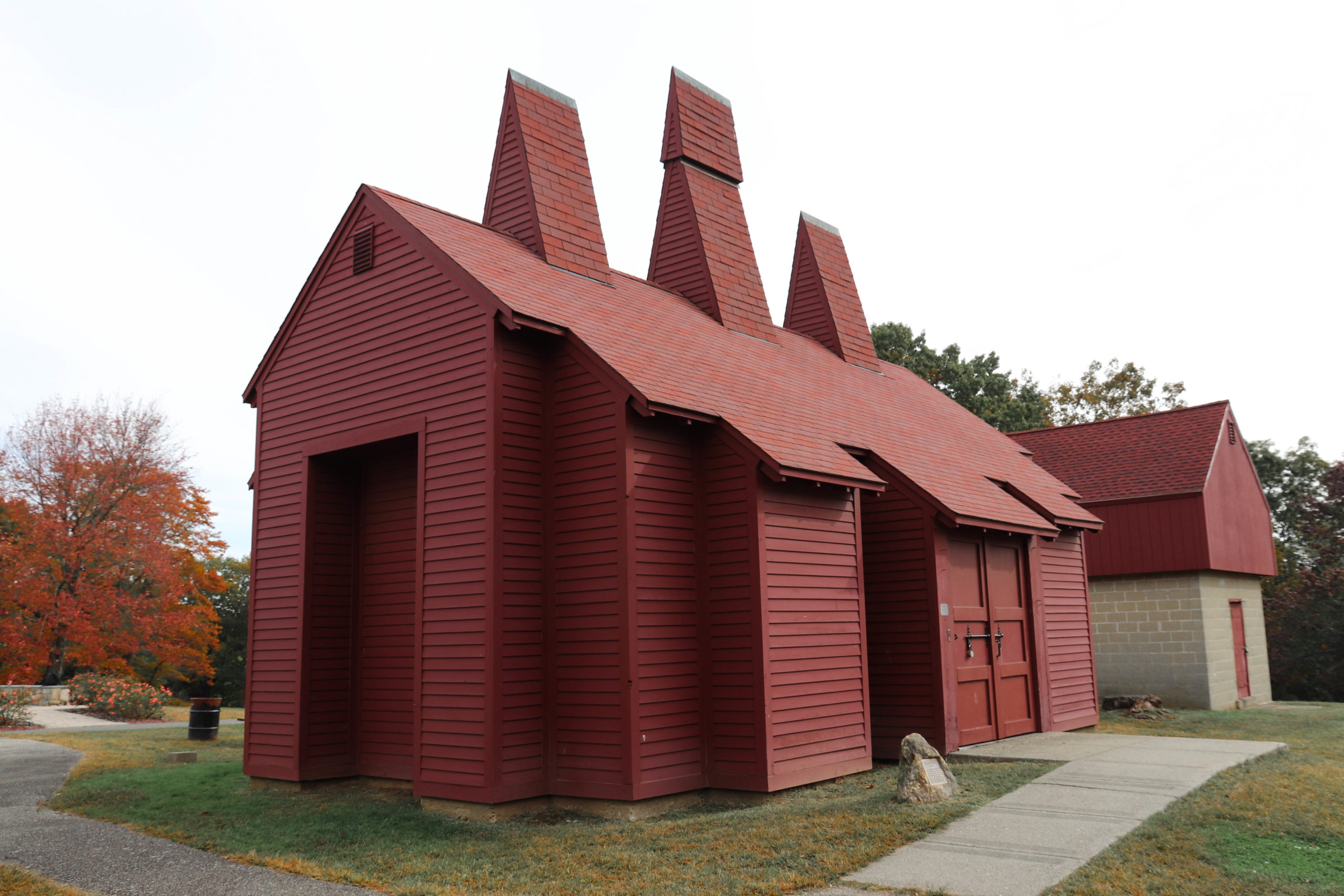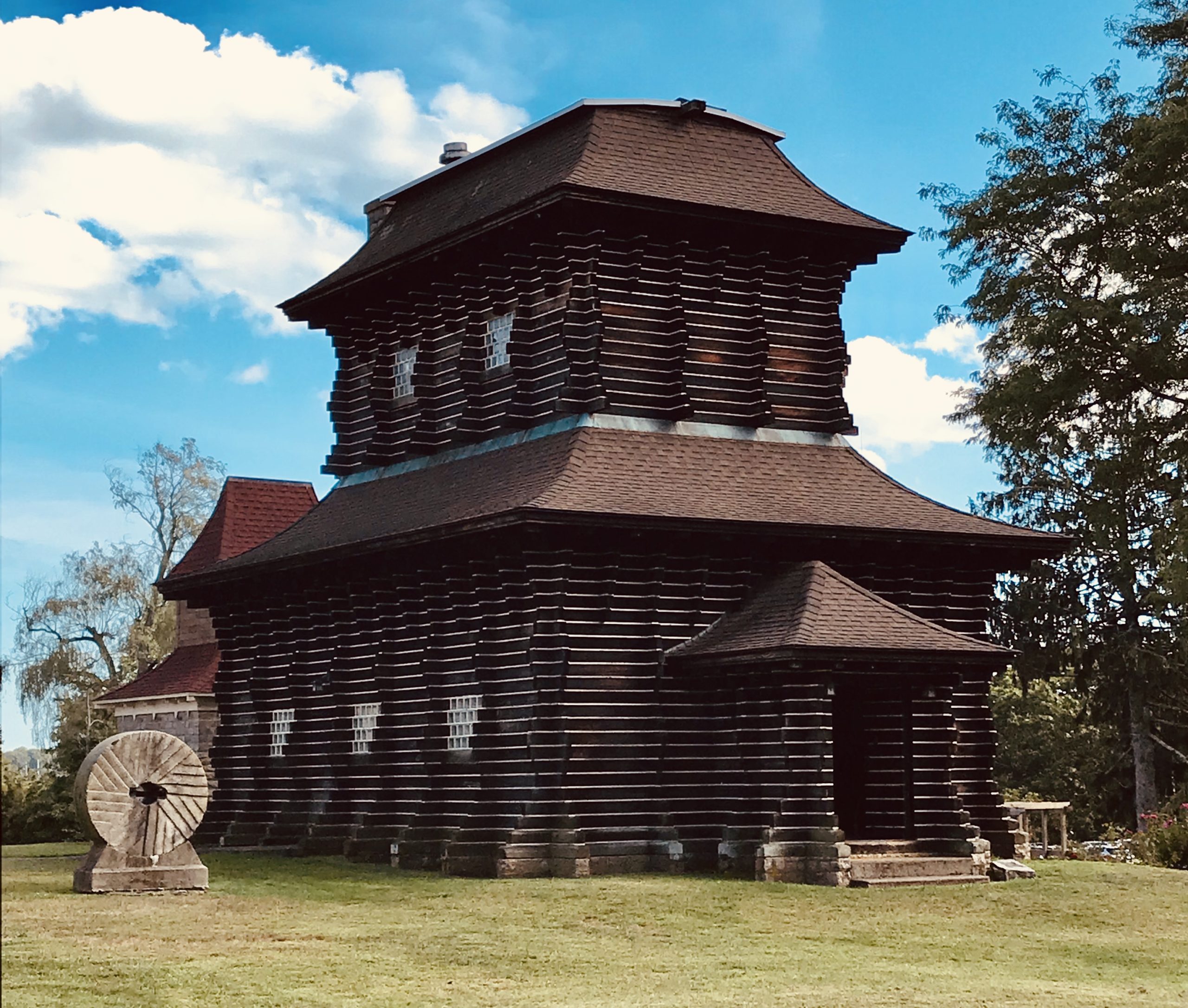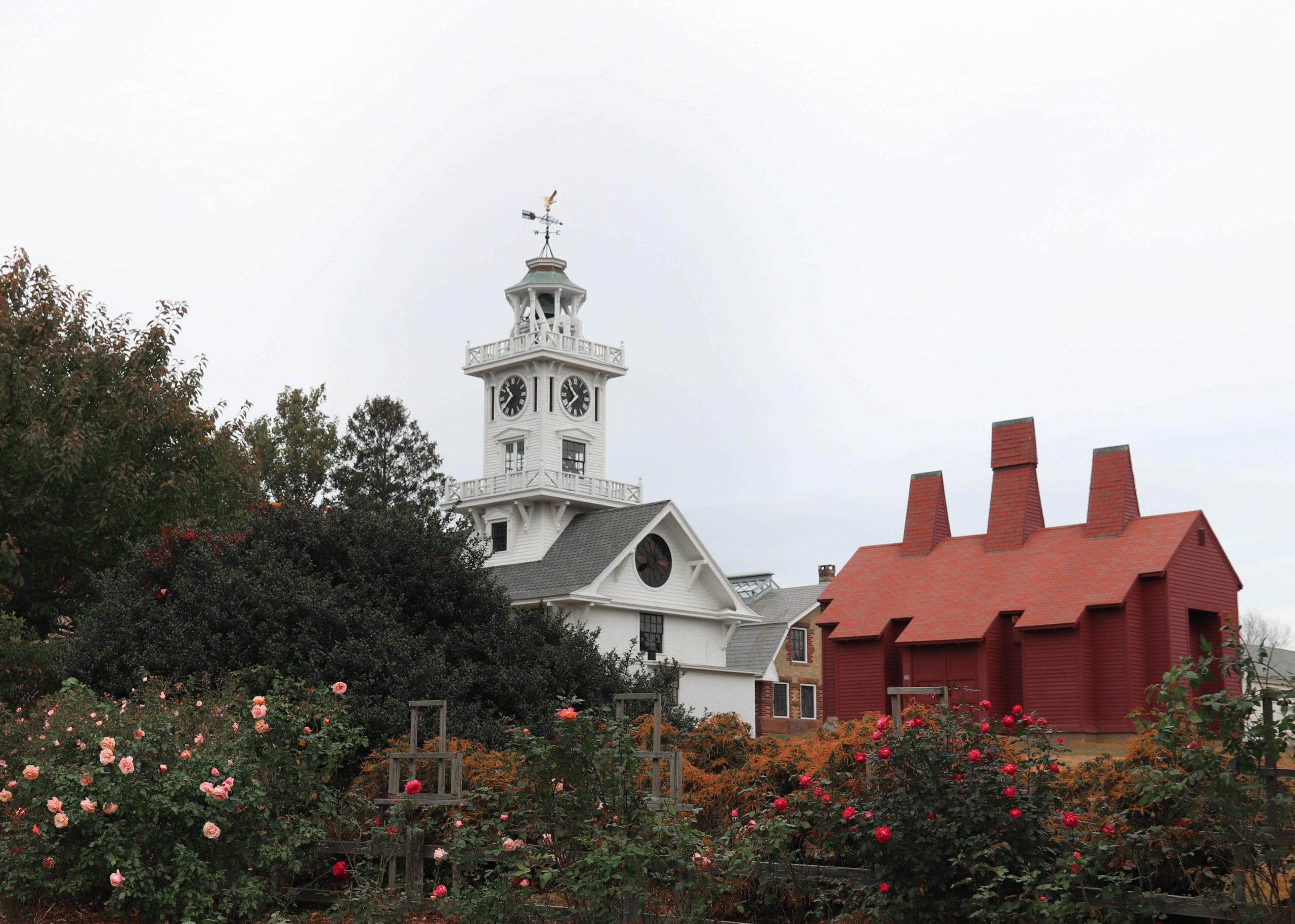(c) Connecticut Explored Inc. Spring 2020
Subscribe/Buy the Issue!
High on a hill overlooking the Housatonic River in the Putney section of Stratford is a collection of structures as strange as any you’ll find anywhere in Connecticut. The 28 buildings clustered on 34 acres of sloping lawn are now part of Boothe Memorial Park and are owned and operated by the Town of Stratford. A few of the buildings, like the 1844 Putney Chapel, were recently moved to the site from nearby locations. But the majority of these odd structures were built here by the eccentric former owners of the property, brothers David and Stephen Boothe.
David Beach Boothe, born in 1867, and Stephen Nichols Boothe, born in 1869, were descended from one of Stratford’s earliest English settlers, according to town records cited in Samuel Orcutt’s A History of the Old Town of Stratford and the City of Bridgeport, Connecticut (Fairfield County Historical Society, 1886). In 1663 Richard Boothe laid the foundation for a farmhouse on what is now Main Street (Route 110). In 1914 the brothers began adding on to the 1840 Greek Revival iteration of the home, using elements of Queen Anne Style, Shingle Style, and what the National Register of Historic Places nomination calls “a highly individualistic eclectic style” of their own. The Boothes added stained-glass windows featuring inscriptions that claimed the house was “the oldest homestead in America.”
But it is their unique blending and subverting of architectural traditions, as much as the property’s longevity, that earned the Boothe Homestead and Boothe Memorial Park a listing on the National Register in 1985. The brothers, who over the years worked in agriculture, insurance, and real estate, didn’t stop with quirky renovations to their farmhouse; instead, they began a veritable spree of unconventional construction. Their designs became increasingly eccentric.
Some structures were amusing follies, like the miniature windmill and diminutive cobblestone lighthouse. Others served a pragmatic purpose disguised by an idiosyncratic structure. They built a gambrel-roof garage using brownstone salvaged from a Bridgeport bank. They built a whimsical, octagonal trolley shelter for passengers traveling on the Connecticut Railway and Lighting Company Line that ran along what is now Route 110. To compete with Henry Ford’s 4-sided blacksmith shop, they built one with 44 sides. Perhaps strangest of all was their pagoda-like Technocratic Cathedral, constructed from California redwood beams without the use of nails. The Technocracy movement advocated for a government run by scientists and engineers; the brothers also claimed the structure’s building materials symbolized the Great Depression. A park walking map boasts that “visiting architects came to gawk.”
The Boothes intended their creations to be accessible to the public. They opened a local history museum inside an old hay barn topped with the clocktower of a Massachusetts church acquired in a trade for an electric carpet sweeper. They built an outdoor basilica that could accommodate thousands for nondenominational services. For events, they strung colored lights on the windmill and let it spin.
The brothers’ political statements seem to have been as provocative as their buildings. Their lighthouse, they said, was the only one the government didn’t supply. When Democratic President Franklin D. Roosevelt failed to confirm their claim to own America’s oldest homestead, they vowed to vote Republican. When Stratford taxed their clocktower after the chimes disturbed neighbors’ chickens, the Boothes proclaimed they would “never give the town the time of day” again. And yet, when they died, Stephen in 1948 and David three months later in 1949, they willed their property to Stratford, continuing their tradition of allowing the public into their offbeat world.
The grounds were opened to the public in 1955, and in 1982 the town appointed a commission for the preservation of the buildings. The commission’s duties included cataloguing the structures in the park and implementing a plan to restore them. The non-profit Friends of Boothe Park was created two years later, and since then this group of volunteers has maintained the grounds and buildings and provided tours. Today, in addition to the Boothes’ creations, visitors to the park will find an observatory, a model train museum, an amateur radio club, and a decommissioned Merritt Parkway toll booth.
Johnna Kaplan is a freelance writer. She blogs at thesizeofconnecticut.com. She last wrote “Site Lines: The Three Lives of Fort Trumbull,” Spring 2019.
Explore!
Boothe Memorial Park & Museum
5800 Main Street, Stratford
townofstratford.com/boothememorialpark, 203-381-2046




